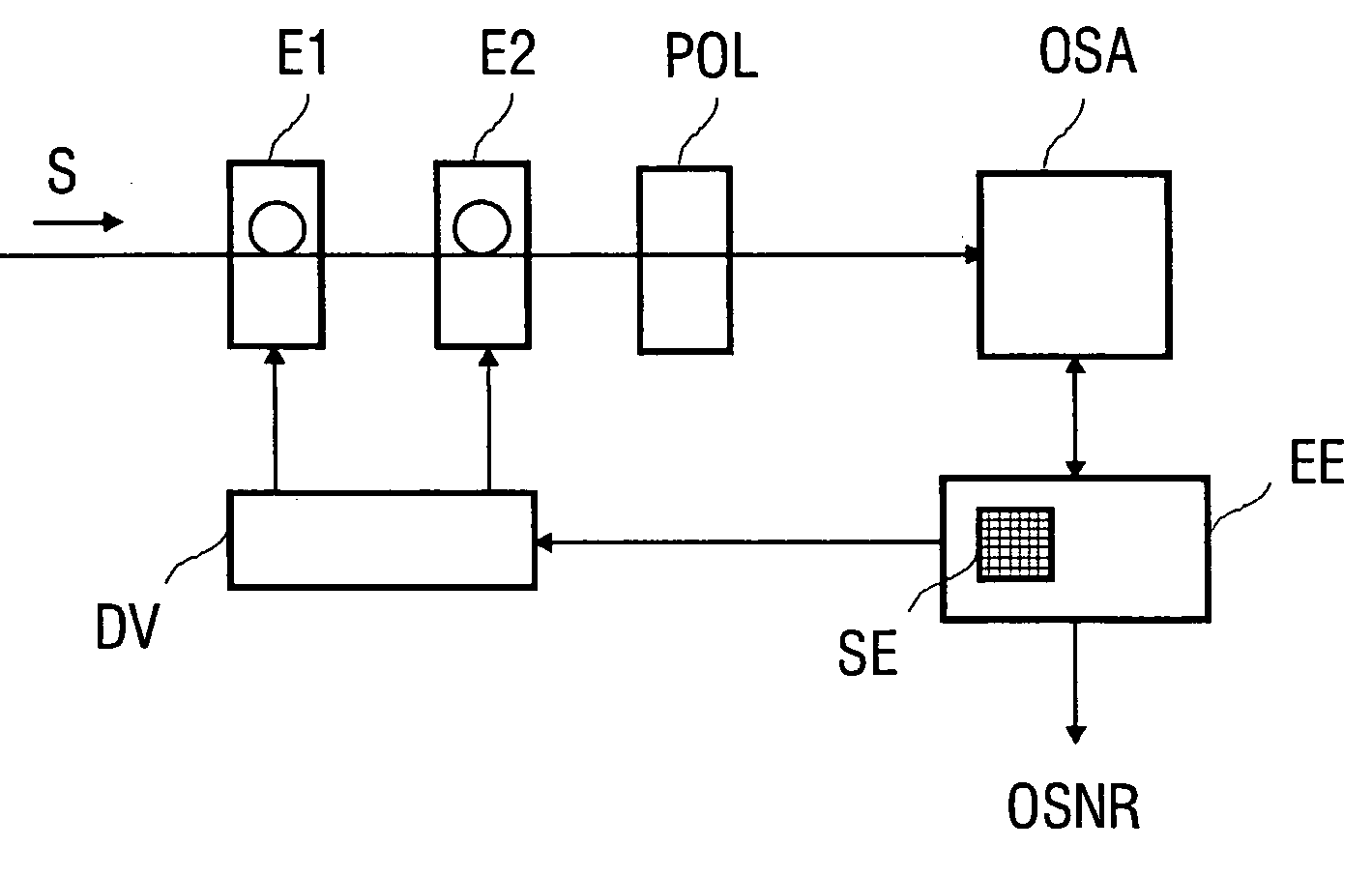Method for determining the signal-to-noise ratio of an optical signal
a signal-to-noise ratio and optical signal technology, applied in the direction of transmission monitoring, transmission monitoring/testing/fault-measurement systems, electrical equipment, etc., can solve the problems of limited transmission range of multichannel wdm signal that can be spanned using wave division multiplex (wdm) transmission systems, channel spacing, and number of wavelength channels
- Summary
- Abstract
- Description
- Claims
- Application Information
AI Technical Summary
Benefits of technology
Problems solved by technology
Method used
Image
Examples
Embodiment Construction
[0021] To provide a simpler illustration of the method according to the invention, a device according to FIG. 1 is selected in such a way that a WDM signal S is first fed to a polarization controller PS comprising a λ / 4 plate E1 and a λ / 2 plate E2 as phase retarder plates. The polarization controller PS is followed by a polarizer POL. For different settings of the polarizer or of the polarization state allowed through from the polarization controller, the spectral power density at the output of this device is recorded in each case by means of an optical spectrum analyzer OSA. The optical spectrum analyzer OSA can be preceded by a wavelength demultiplexer or a wavelength-selective filter, so that selected channels or only one channel of the WDM signal can be recorded. However, demultiplexing is in practice unnecessary. Connected to the optical spectrum analyzer OSA is an optical signal-to-noise ratio (OSNR) determination unit EE in which an interpolation and a deviation search of the...
PUM
 Login to View More
Login to View More Abstract
Description
Claims
Application Information
 Login to View More
Login to View More - R&D
- Intellectual Property
- Life Sciences
- Materials
- Tech Scout
- Unparalleled Data Quality
- Higher Quality Content
- 60% Fewer Hallucinations
Browse by: Latest US Patents, China's latest patents, Technical Efficacy Thesaurus, Application Domain, Technology Topic, Popular Technical Reports.
© 2025 PatSnap. All rights reserved.Legal|Privacy policy|Modern Slavery Act Transparency Statement|Sitemap|About US| Contact US: help@patsnap.com



